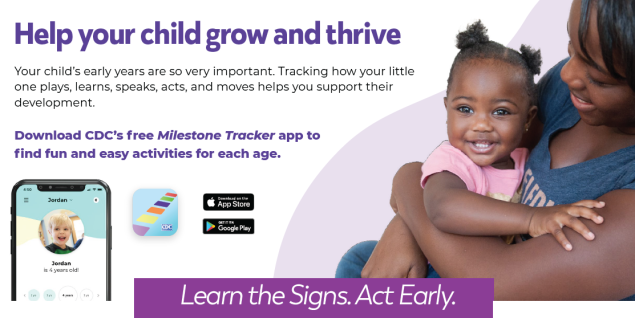Executive Summary
‹View Table of Contents
The Children’s Health Act of 2000 authorized the Centers for Disease Control and Prevention (CDC) to create the Autism and Developmental Disabilities Monitoring (ADDM) Network to track the number and characteristics of children with autism spectrum disorder (ASD)* and other developmental disabilities in diverse communities throughout the United States. The ADDM Network has been collecting and reporting ASD data from across the United States for more than twenty years.
These findings are based on analysis of data collected from health and special education records of 8-year-old and 4-year-old children who lived in one of 11 different areas throughout the United States in 2020.
- ADDM Network communities reported increases in early ASD identification over time. Overall, children born in 2016 were 1.6 times as likely to receive an ASD diagnosis or ASD special education classification by 4 years of age compared to children born in 2012.
- Early ASD identification was disrupted following the start of the COVID-19 pandemic. Beginning around March 2020, children born in 2016 began to receive fewer ASD evaluations and identifications within ADDM Network communities than children born in 2012 during the same age window. Communities can use these data to better understand how the pandemic could have affected early ASD identification among young children and anticipate future needs as these children get older.
- The estimated percentage of 8-year-old children identified with ASD (1 in 36) continued to increase over previous years’ ADDM Network estimates.
- For the first time, the percentage of 8-year-old Black, Hispanic, and Asian or Pacific Islander (A/PI) children identified with ASD was higher than among 8-year-old White children, which was the opposite of previously observed racial and ethnic differences across the ADDM Network. While this new pattern could indicate overall improvements in equitable identification of ASD, it is important to consider other factors that may be leading to higher rates of ASD in historically under served populations.
1 in 36
8-year-old children
identified with ASD in 2020
*Based on tracking within 11
communities in the United States

The 2023 Community Report on Autism highlights the ADDM Network’s most recent findings on ASD in 8-year-old and 4-year-old children, based on data collected in 2020. The data analyzed in this report was collected in 11 communities across the United States. These communities also tracked and reported ASD data from 2018 which was included in the previous 2021 Community Report on Autism.
Early identification remains a major focus of CDC’s ADDM Network, as it is one of the most important tools communities have in helping to make a difference in the lives of children with ASD. The earlier that children are identified with ASD, the earlier they can access services and supports. Prior to the COVID-19 pandemic, progress had been made in the early identification of ASD. In ADDM Network communities, children born in 2016 were 1.6 times as likely as children born in 2012 to be identified as having ASD by age 4 (48 months).
However, progress in early ASD identification declined dramatically with the start of the COVID-19 pandemic. In 2020, children with ASD born in 2016 received fewer ASD evaluations compared to children born in 2012 when they were 4 years old. Disruptions in timely evaluation of children during the pandemic could have long-lasting effects as a result of delays in the identification and initiation of services during this unprecedented time.
CDC’s Learn the Signs. Act Early. Program took quick action and assessed the impact of the COVID-19 pandemic on early identification of ASD and other developmental disabilities. Act Early COVID-19 Response Teams helped to identify some promising practices to reduce the impact of the pandemic on early identification and service delivery. This included adding Deputy Ambassadors to expand access to early identification materials as well as customized work plans for individual communities.

The ADDM Network continues to report overall increases in ASD prevalence estimates since monitoring began in 2000. In 2020, the ADDM Network found that 1 in 36 (2.8%) 8-year-old children were identified with ASD based on tracking within 11 communities in the United States. A higher percentage of ASD was observed for Black, Hispanic, and A/PI children than for White children, which could reflect improvements in identification among these groups, but highlights a need to understand racial and ethnic differences in ASD prevalence.
Knowing how many children have ASD is only part of the picture. ADDM data show that ASD is common across all groups of children. These findings highlight the need for timely and equitable access to early identification and support services. CDC and its partners continue efforts to:
- ensure that children are evaluated and diagnosed as soon as possible after developmental concerns are identified; and
- promote early and equitable identification of ASD and timely enrollment in services.
Service providers (such as healthcare organizations and school systems), researchers, and policymakers can use ADDM Network findings to:
- support service planning;
- inform policies that promote improved outcomes in health care and education; and
- guide research on risk and protective factors for ASD and interventions that can help children with ASD succeed.
CDC will continue tracking the number and characteristics of children with ASD and researching risk and protective factors for ASD. Through the Learn the Signs. Act Early. Program, CDC will continue to promote early identification—one of the most powerful tools communities have for making a difference in the lives of children with ASD.


* CDC is aware that some members of the autism community prefer to use terms such as “person with autism,” “person with ASD,” “autistic person,” and/or “person on the autism spectrum,” while others prefer the use of other terms. CDC promotes person-first language but also promotes an awareness that language changes with time and individuals within groups sometimes have different opinions about the preferred language used to describe themselves. For the purposes of this report, the terms “autism spectrum disorder (ASD)” and “ASD” are used when referring to the DSM defined diagnosis. The terms “children with ASD” or “children identified with ASD” is also often used throughout this report in accordance with CDC guidance on person-first language.
Pages in this Report
- 2023 Community Report on Autism
- ›Executive Summary
- Key Findings from the ADDM Network
- A Deeper Dive
- Spotlight On: Progress in Early Identification Disrupted during the COVID-19 Pandemic
- Spotlight On: A New Pattern in Racial and Ethnic Differences
- Data for Action
- ADDM Network Site Snapshots Overview
- A Snapshot of Autism Spectrum Disorder in Arizona
- A Snapshot of Autism Spectrum Disorder in Arkansas
- A Snapshot of Autism Spectrum Disorder in California
- A Snapshot of Autism Spectrum Disorder in Georgia
- A Snapshot of Autism Spectrum Disorder in Maryland
- A Snapshot of Autism Spectrum Disorder in Minnesota
- A Snapshot of Autism Spectrum Disorder in Missouri
- A Snapshot of Autism Spectrum Disorder in New Jersey
- A Snapshot of Autism Spectrum Disorder in Tennessee
- A Snapshot of Autism Spectrum Disorder in Utah
- A Snapshot of Autism Spectrum Disorder in Wisconsin
- Glossary
- References
